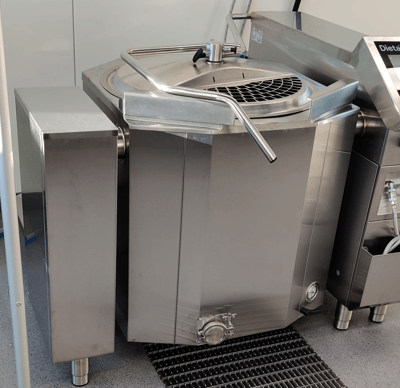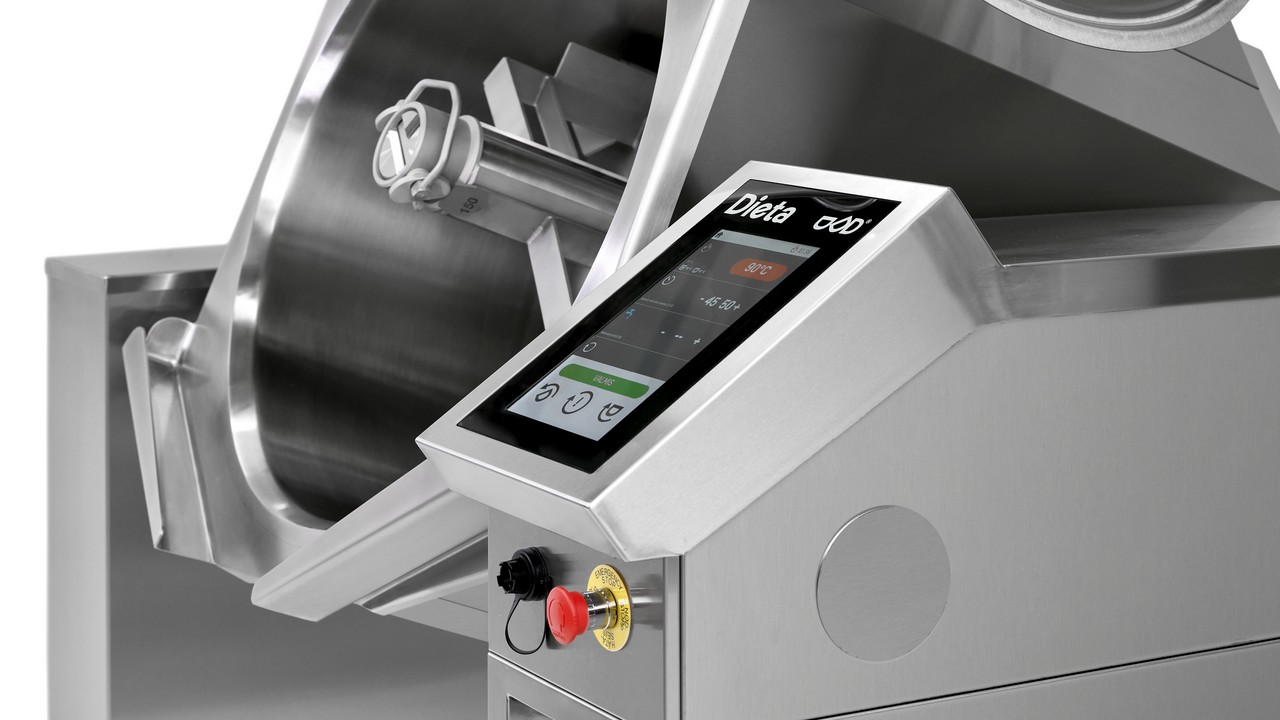Emptying pipes are used for emptying the product from the kettle through the pipe instead of tilting or manually taking the food out. An emptying pipe is naturally more suitable for liquid products that flow through the pipe at the bottom of the kettle. Dieta kettles offer emptying pipes in two different positions. Due to differences in these pipe types' performance, they are more suitable for other applications.
Types of emptying pipes
|
The front emptying pipe is located in front of the kettle. It is positioned at the same height where the curved bottom parts start. This means that to have all the product emptied through the pipe, the kettle needs to be tilted to have the final part drained through the pipe. The front emptying pipe is best suited for use where the kettle is only intermittently emptied through the pipe and, at other times, operated normally. The benefit of the front emptying pipes is that, if not needed, they cannot be used. |
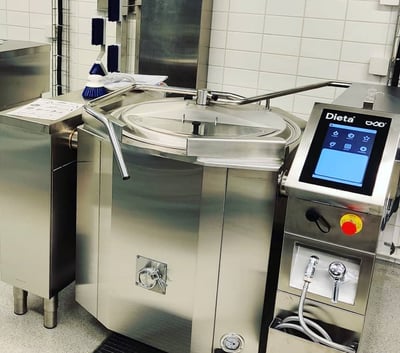
|
|
|
The bottom emptying pipe is located at the low part of the kettle's curved bottom - almost at the center of the kettle. The benefit is that all the products can be emptied without tilting the kettle. As a counterweight, the length of the pipe is longer; thus, during cooking, it needs to be plugged in to prevent ingredients from entering the pipe. As the bottom emptying pipe needs plugging every time cooking is done, it is more optimal for applications where food is emptied constantly through the pipe. Typical cases are when the kettle is connected to a mass pump that automatically portions the product from the kettle. |
The different valves for emptying the pipe
In Dieta kettles, emptying pipes are typically provided with a clamp-type flange connection. This provides the freedom to use the valve type best suited for the kettle's application. The typical valves selected are:
|
Echtermann-type valves Echermann-type valves provides full pass-through with a 90-degree turn, slightly limiting the size of components that flow through and directing the flow downwards. These are typically selected for the front emptying pipe for intermittent emptying through the pipe to GN trays. |
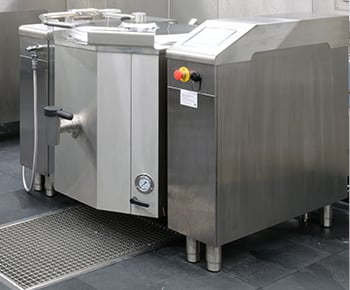 |
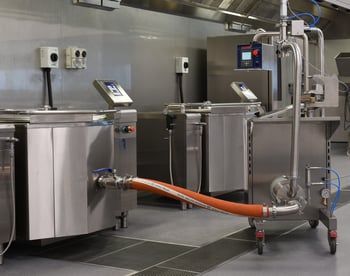
|
The ball valve The ball valve provides a full pass-through making it suitable for replacing the tilting of the kettle, but more often, it is used for applications where food is pumped through the emptying pipe. Ball valves can be used with both front and bottom emptying pipes. The disadvantage of the ball valve is its relatively large size and longer cleaning process, so it is not optimal for intermittent use. |
|
Butterfly valve The construction of a butterfly valve is relatively simple. The rotating disc in the center of the valve controls the flow through the valve. In the closed position, the disc blocks the valve, while in the open position, the disc is turned around on its axis and opens flow from both sides of the center axis. In the butterfly valve, the valve is never open for the full diameter of the emptying pipe.
|
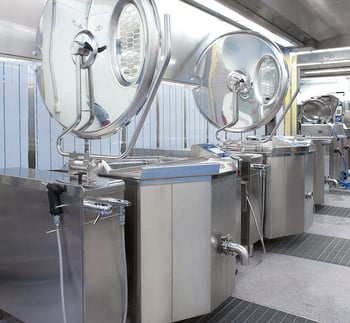 |
|
The arch valve |
|
Emptying pipe |
Products |
Applications |
||||
|
Valve type |
Front emptying pipe |
Bottom emptying pipe |
For smooth products |
For products with components |
Emptying to |
Pumping applications |
|
Butterfly valve |
OK |
Not |
OK |
Not |
OK |
Not |
|
Echtermann valve |
OK |
Not |
OK |
Not |
OK |
Not |
|
Ball valve |
OK |
OK |
OK |
OK |
OK |
OK |
|
Arch valve |
OK |
OK |
OK |
OK |
OK |
OK |
Are you already familiar with the Water connections and utilities of Dieta mixer kettles? Read more!
Choosing the Right Mixer Kettle Quick Guide helps you to determine your needs for a mixer kettle. If you are Partner, you can find the guide on Dietatec Extranet. Download the handy guide >
